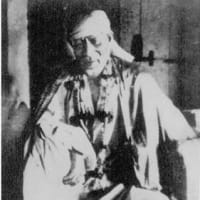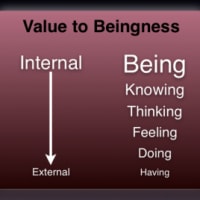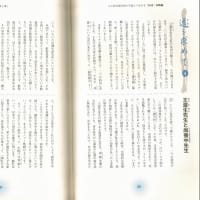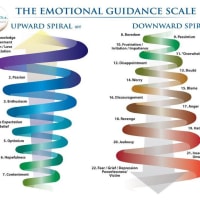Set yourself free from Emotional Pain - The third way is to dive into the very core of the emotion.
情緒的苦痛からあなた自身を解放してください。3番目の方法は感情のまさに核心に飛び込むことです。
[PDF]
Set yourself free from Emotional Pain (英語:全3頁)
Psychmatters http://www.psychmatters.com.au/
「学習に関係があるようになること」プログラム 「学習に関係があるようになること」は、教育心理学プログラム(西側のシドニー大学)の熟練者と連携したPsychMatters、評価と治療センターのイニシアティブです。プログラムは、非常に手頃な価格でカウンセリングと評価を子供たち、若者と彼らの両親に提供します。プログラムが、心理学者にアクセスしない学校によって、現在使われます。テスト、観察、カウンセリングと相談することは、学校建物で提供されることができます。 プログラムは、完全に登録された心理学者になるために更なる実質的な働きを経験する必要がある、完全に資格のある、学士号を受けた心理学者の職員を置いています。主任は、教育的な子供たちと青春期の心理学のすべての領域に感じられる、非常に専門で登録された心理学者です
----------
PSYCHOLOGISTS & COUNSELLORS
172 Majors Bay Rd, Concord, NSW 2137
ph: 02 9736 2721 - fax: 02 9736 3688 - email: info@psychmatters.com.au - www.psychmatters.com.au
Set yourself free from Emotional Pain
There are three ways to approach the process of releasing, and they all lead to the same result: liberating your natural ability of letting go of any unwanted emotion on the spot, and allowing some of the suppressed energy in your subconscious to dissipate.
The first way is by choosing to let go of the unwanted feeling.
The second way is to welcome the feeling, to allow the emotion just to be.
The third way is to dive into the very core of the emotion.
A simple exercise:
Pick up a pen, a pencil, or some small object that you would be willing to drop without giving it a second thought. Now, hold it in front of you and really grip it tightly. Pretend this is one of your limiting feelings and that your hand represents your gut or your consciousness. If you held the object long enough, this would start to feel uncomfortable yet familiar.
Now, open your hand and roll the object around in it. Notice that you are the one holding on to it; it is not attached to your hand. The same is true with your feelings, too. Your feelings are as attached to you as this object is attached to your hand.
We hold on to our feelings and forget that we are holding on to them. It’s even in our language. When we feel angry or sad, we don’t usually say, “I feel angry,” or, “I feel sad.” We say, “I am angry,” or, “I am sad.” Without realizing it, we are misidentifying that we are the feeling. Often, we believe a feeling is holding on to us. This is not true… we are always in control and just don’t know it.
Now, let the object go.
What happened? You let go of the object, and it dropped to the floor. Was that hard? Of course not. That’s what we mean when we say “let go.”
You can do the same thing with any emotion: choose to let it go.
1
----- P2 -----
Sticking with this same analogy: If you walked around with your hand open, wouldn’t it be very difficult to hold on to the pen or other object you’re holding? Likewise, when you allow or welcome a feeling, you are opening your consciousness, and this enables the feeling to drop away all by itself―like the clouds passing in the sky or smoke passing up a chimney with the flue open. It is as though you are removing the lid from a pressure cooker.
Now, if you took the same object―a pencil, pen, or pebble―and magnified it large enough, it would appear more and more like empty space. You would be looking into the gaps between the molecules and atoms. When you dive into the very core of a feeling, you will observe a comparable phenomenon: nothing is really there. (ask your therapist for the ballooning/universe exercise)
As you master the process of releasing, you will discover that even your deepest feelings are just on the surface. At the core you are empty, silent, and at peace―not in the pain and darkness that most of us would assume. In fact, even our most extreme feelings have only as much substance as a soap bubble. And you know what happens when you poke your finger into a soap bubble: it pops. That’s exactly what happens when you dive into the core of a feeling.
Please keep these three analogies in mind as we go through the releasing process together. Releasing will help you to free yourself from all of your unwanted patterns of behaviour, thought, and feeling. All that is required from you is being as open as you can be to the process. Releasing will free you to access clearer thinking, yet it is not a thinking process. Although it will help you to access heightened creativity, you don’t need to be particularly creative to be effective at doing it.
You will get the most out of the process of releasing the more you allow yourself to see, hear, and feel it working, rather than by thinking about how and why it works. Lead, as best you can, with your heart, not your head. If you find yourself getting a little stuck in trying to figure it out, you can use the identical process to let go of “wanting to figure it out.” Guaranteed, as you work with this process, you will understand it more fully by having the direct experience of doing it.
So here we go.
The Choice of Letting Go and Aiming for Emotional Intelligence
Make yourself comfortable and focus inwardly. Your eyes may be open or closed.
Step 1: Focus on an issue that you would like to feel better about, and then allow yourself to feel whatever you are feeling in this moment. This doesn’t have to be a strong feeling. In fact, you can even check on how you feel about this exercise and what you want to get from it. Just welcome the feeling and allow it to be as fully or as best you can.
This instruction may seem simplistic, but it needs to be. Most of us live in our thoughts, pictures, and stories about the past and the future, rather than being aware of how we actually feel in this moment. The only time that we can actually do anything about the way we feel (and, for that matter, about our businesses or our lives) is NOW. You don’t need to wait for a feeling to be strong before letting go. In fact, if you are feeling numb, flat, blank, cut off, or empty inside, those are feelings that can be let go of just as easily as the more recognizable ones. Simply do the best you can. The more you work with this process, the easier it will be for you to identify what you are feeling.
2
----- P3 -----
Step 2: Ask yourself one of the following three questions:
Could I let this feeling go?
Could I allow this feeling to be there?
Could I welcome this feeling?
These questions are merely asking you if it is possible to take this action. “Yes” or “no” are both acceptable answers. You will often let go even if you say “no.” As best you can, answer the question that you choose with a minimum of thought, staying away from second-guessing yourself or getting into an internal debate about the merits of that action or its consequences.
All the questions used in this process are deliberately simple. They are not important in and of themselves but are designed to point you to the experience of letting go, to the experience of stopping holding on. Go on to Step 3 no matter how you answered the first question.
Step 3: No matter which question you started with, ask yourself this simple question: Would I? In other words: Am I willing to let go?
Again, stay away from debate as best you can. Also remember that you are always doing this process for yourself―for the purpose of gaining your own freedom and clarity. It doesn’t matter whether the feeling is justified, long-standing, or right.
If the answer is “no,” or if you are not sure, ask yourself: “Would I rather have this feeling, or would I rather be free?”
Even if the answer is still “no,” go on to Step 4.
Step 4: Ask yourself this simpler question: When?
This is an invitation to just let it go NOW. You may find yourself easily letting go. Remember that letting go is a decision you can make any time you choose.
Step 5: Repeat the preceding four steps as often as needed until you feel free of that particular feeling.
You will probably find yourself letting go a little more on each step of the process. The results at first may be quite subtle. Very quickly, if you are persistent, the results will get more and more noticeable. You may find that you have layers of feelings about a particular topic. However, what you let go of is gone for good.
Ref: “www.sedona.com/html/sample-of-process.aspx
3
----------
PSYCHOLOGISTS & COUNSELLORS
172メジャーズ・ベイ通り、調和、NSW 2137
ph:02 9736 2721 - ファックス:02 9736 3688 - 電子メール:
info@psychmatters.com.au -www.psychmatters.com.au
情緒的苦痛からあなた自身を解放します。
リリースする過程に接近するために3つの方法があります。また、それらはすべて同じ結果に結びつきます:
任意の望まれない感情の試みをその場でさせて、抑えたエネルギーのうちのいくらかを許可するあなたの自然な能力の解放、の中で、あなたの、消えるのに潜在意識。
最初の方法は望まれない感覚を手放すことを決めることによります。
第2の方法はちょうど感情があることを可能にするために感覚を歓迎することです。
3番目の方法は感情のまさに核心に飛び込むことです。
単純な練習:
それに再考を与えずに、喜んで落とすペン、鉛筆あるいはある小さな物体を拾い上げてください。
さて、あなたの前にそれを保持して、実際にしっかりとそれをつかんでください。
これが、あなたが感情を制限することのうちの1つで、あなたの手があなたの腸またはあなたの意識をあらわすふりをしてください。
もしあなたがオブジェクトを十分に長く保持すれば、これは不快であるがなじみ深く感じ始めるでしょう。
さて、手を開いて、その中でオブジェクトを転がしてください。
それを保持するあなたであることに注目してください;
それはあなたの手に付けられていません。
同じことは、あなたの感情でまた真実です。
あなたの感情はあなたにこのオブジェクトがあなたの手に付けられているのと同じくらい付けられています。
私たちは感情を保持し、私たちがそれらを保持していることを忘れます。
それは私たちの言語でさえあります。
私たちは、腹を立てるか悲しい場合、「私は腹を立てます」と通常言いません、あるいは、「私は悲しく感じます。」とは言いません。
私たちは、「私は腹を立てています」と言います、あるいは、「私は悲しい。」と言います。
それを実現せずに、私たちはそれを誤認しています、私たちは感覚です。
しばしば、私たちは、感じが私たちを保持していると信じます。
これは私たちが常にコントロールでであるtrue…でなく、それをまったく知りません。
さて、オブジェクトを放してください。
何が起こりましたか。
あなたはオブジェクトを手放します。また、それは床へ落ちました。
それは困難でしたか。
もちろん、ない。
それは「放してください」と言う場合、私たちが言いたいものです。
任意の感情と同じことをすることができます:
それを放すことに決めてください。
1
----- P2 -----
この同じ類似から離れないこと:
手で歩き回った場合、開いていただけませんか、ペンまたは他のものを保持するのに非常に困難である、もっていることに反対する?
同様に、感覚を許可するか歓迎する場合、あなたは意識を開いています。また、煙道を備えた煙突を断る空か煙の中で通過する雲が開くそれ自体ように、感覚はこれによって遠方にそばにすべてを落とすことができます。
あたかもあなたが圧力鍋から蓋を取り除いているかのように、それはそうです。
同じにオブジェクトa鉛筆をとったならば、さて、ペン、小石またそれを拡大した、十分に大きな、それが、空所のようにますます現われるでしょう。
分子と原子の間のギャップを調査するでしょう。
感じのまさに核心に飛び込む時、比較可能な現象を観察するでしょう:
何も実際にそこにありません。
(気球乗り/宇宙練習をあなたのセラピストに求めます。)
リリースする過程をマスターするとともに、最も深い感情さえがちょうど表面上にあることを発見するでしょう。
核心では、暗黙で、中身がありません、そしてで、私たちのうちのほとんどが仮定する苦痛および暗さの中で平和ではない。
実際、私たちの最も極端な感情さえにはシャボン玉と単に同じくらいの物質があります。
また、あなたがシャボン玉に指を突っ込む場合、何が起こるか知っています:
それはポップします。
それは、まさに感じの核心に飛び込む場合、起こることです。
私たちがリリースするプロセスをともに経るように、これらの3つの類似を覚えておいてください。
リリースは、望まれないパターンの振る舞い、考えおよび感覚のすべてからあなたが脱するのを助けるでしょう。
あなたに要求されるのはプロセスにいることができるのと同じくらい開いています。
リリースは、交換清算者思考にアクセスするためにあなたを解放するでしょう。しかし、それは思考過程ではありません。
それはあなたが高められた創造性にアクセスするのを助けますが、それをすることで有効であるためには特に創造的である必要がありません。
もっとリリースする過程を最大限に利用するでしょう、あなた自身がそれを見て、聞き、それがどうやって、またなぜ作動するかに関して考えることによってではなく、働くと思うことを認めます。
最良のものとして、リードする、あなたはできる(あなたの心で、)、ない、あなたの頭。
あなた自身がそれを解こうとすることに少し差し込まれているのを見つければ、「それを解きたい」ことを手放すために同一過程を使用することができます。
このプロセスを用いて仕事をするので、保証されて、それをした直接の経験を持っていることによりそれをより完全に理解するでしょう。
さあ行こう(したがって)。
放すことをさせて、感情知能を目指して進む選択
快適になって、内部に注目してください。
あなたの目は開いているかもしれないあるいは閉じられるかもしれません。
ステップ1:
あなたが気分がよくなりたい問題に注目して、次に、あなた自身が、あなたがこの瞬間に感じているものすべてを感じることを可能にしてください。
これは強い感じである必要がありません。
実際、この練習に関してどのように感じるか、また、あなたはそれから何を得たいかさらに調べることができます。
感覚を単に歓迎し、それがあることを可能にする、として、完全に、あるいは、最良のものとしてできます。
この指示は極度に単純化したように見えるかもしれません。しかし、それはそうである必要があります。
私たちがこの瞬間にどのように実際に感じるかに気づいているのではなく、私たちのうちのほとんどは、私たちの考え、写真、および過去と将来の話で暮らしています。
感じる(かつさらに言えばビジネスまたは生命に関して)方法に関して私たちが実際に何でもすることができるただ一つの時が、NOWです。
感じが行くことをさせる前に強いことを待つ必要はありません。
実際、水平で、無感覚に感じていれば、ブランク、遮断された、あるいは空、内側では、それらはさせることができる感情です、行く、より認識しうるものと同じくらいちょうど容易に。
単に、できる最善を尽くしてください。
このプロセスでより多くに働くほど、それはあなたが何を感じているか識別するのに容易でしょう。
2
----- P3 -----
ステップ2:
あなた自身に次の3つの質問のうちの1つを尋ねてください:
私はこの感覚を放すことができましたか。
私は、この感覚がそこにあることを認めることができましたか。
私はこの感覚を歓迎することができましたか。
これらの質問は、単にこの処置を講ずることが可能かどうかあなたに尋ねています。
「はい」あるいは「ない」両方とも受理可能な答えです。
「いいえ」と答えても放すことをしばしばさせるでしょう。
最良のように、あなたはできる、あなた自身を結果論で批判するかそのアクションまたはその結果の長所に関する内部討論に入ることを離れて、最低限の考えで選ぶという疑問に答えます。
このプロセスの中で使用される質問はすべて故意に単純です。
それらは、本質的におよび本質的にに重要ではありませんが、持ちこたえることをやめた経験に、行くことをさせた経験にあなたを指示することを目指しています。
どれほど最初の質問に答えたとしても、ステップ3に進んでください。
ステップ3:
あなた自身にこの単純な質問をしてください(あなた、始めた、どちら質問で):
私はするでしょう?
言いかえれば:
私は、放すことを喜んでさせますか。
最良のものとして再び、討論を離れる、できます。
さらにこのプロセスを常に行っていることを思い出す、のために、自分の自由および明瞭さを獲得するあなた自身目的で。
感覚が長年で、正しくて正当化されるかどうかは重要ではありません。
答えが「いいえ」である場合、あるいは本当でない場合は、あなた自身に尋ねてください:
「私はむしろこの感情を抱きたいですか。それとも、私はむしろ暇でありますか。」
答えがまだ「いいえ」でも、ステップ4に進んでください。
ステップ4:
あなた自身にこのより単純な質問をしてください:
いつ?
これはそれを単に放すための招待です、今。
あなた自身が放すことを容易にさせているのを見つけるかもしれません。
放すことをさせることを選ぶ時は常にできる決定であることを覚えておいてください。
ステップ5:
前の4ステップを特にその感覚がなく感じるまで必要であるように頻繁に繰り返してください。
恐らくあなた自身がプロセスの各ステップでもう少し放すことをさせているのを見つけるでしょう。
結果は初めは全く微妙かもしれません。
非常に速く、あなたが執拗ならば、結果はますます顕著になるでしょう。
特別のトピックに対する感情の層を持っていることを知ってもよい。
しかしながら、あなたが手放すものは永久になくなりました。
Ref: “www.sedona.com/html/sample-of-process.aspx
3
----------
Google ドキュメント クイックビュー
この英文の翻訳が掲載されているサイト:
リリース・テクニック - PukiWikiMindtech
リリース=手放す(レット・ゴー)
感情を手放すには3つの方法があります。
リリースのプロセス
これからリリースするプロセスを行なう際、今まで述べた例えを念頭に置いて行なって下さい。
情緒的苦痛からあなた自身を解放してください。3番目の方法は感情のまさに核心に飛び込むことです。
[PDF]
Set yourself free from Emotional Pain (英語:全3頁)
Psychmatters http://www.psychmatters.com.au/
「学習に関係があるようになること」プログラム 「学習に関係があるようになること」は、教育心理学プログラム(西側のシドニー大学)の熟練者と連携したPsychMatters、評価と治療センターのイニシアティブです。プログラムは、非常に手頃な価格でカウンセリングと評価を子供たち、若者と彼らの両親に提供します。プログラムが、心理学者にアクセスしない学校によって、現在使われます。テスト、観察、カウンセリングと相談することは、学校建物で提供されることができます。 プログラムは、完全に登録された心理学者になるために更なる実質的な働きを経験する必要がある、完全に資格のある、学士号を受けた心理学者の職員を置いています。主任は、教育的な子供たちと青春期の心理学のすべての領域に感じられる、非常に専門で登録された心理学者です
- - - - - - ARTICLES - - - - - -
Free yourself from emotional pain
Added On: 2009-07-28 14:18:36
There are three ways to approach the process of releasing, and they all lead to the same result: liberating your natural ability of letting go of any unwanted emotion on the spot, and allowing some of the suppressed energy in your subconscious to dissipate.
Download
- - - - - - 記事 - - - - - -
自分自身に付け加えられる感情的な痛みから解放してください
:2009-07-28 14:18:36
リリースするプロセスに近づく3つの方法があります、そして、それらのすべては同じ結果につながります:即座にどんな不必要な感情でも捨てて、あなたの潜在意識で抑えられたエネルギーの一部を消えさせるあなたの天賦の才を解放すること。
ダウンロード先:http://www.psychmatters.com.au/uploads/files/21620_free-from-emotional-pain.pdf
http://www.psychmatters.com.au/uploads/files/21620_free-from-emotional-pain.pdf
Google ドキュメント クイックビュー
(注記:Google ドキュメント に保存できます。Web で閲覧できます。)
----------
PSYCHOLOGISTS & COUNSELLORS
172 Majors Bay Rd, Concord, NSW 2137
ph: 02 9736 2721 - fax: 02 9736 3688 - email: info@psychmatters.com.au - www.psychmatters.com.au
Set yourself free from Emotional Pain
There are three ways to approach the process of releasing, and they all lead to the same result: liberating your natural ability of letting go of any unwanted emotion on the spot, and allowing some of the suppressed energy in your subconscious to dissipate.
The first way is by choosing to let go of the unwanted feeling.
The second way is to welcome the feeling, to allow the emotion just to be.
The third way is to dive into the very core of the emotion.
A simple exercise:
Pick up a pen, a pencil, or some small object that you would be willing to drop without giving it a second thought. Now, hold it in front of you and really grip it tightly. Pretend this is one of your limiting feelings and that your hand represents your gut or your consciousness. If you held the object long enough, this would start to feel uncomfortable yet familiar.
Now, open your hand and roll the object around in it. Notice that you are the one holding on to it; it is not attached to your hand. The same is true with your feelings, too. Your feelings are as attached to you as this object is attached to your hand.
We hold on to our feelings and forget that we are holding on to them. It’s even in our language. When we feel angry or sad, we don’t usually say, “I feel angry,” or, “I feel sad.” We say, “I am angry,” or, “I am sad.” Without realizing it, we are misidentifying that we are the feeling. Often, we believe a feeling is holding on to us. This is not true… we are always in control and just don’t know it.
Now, let the object go.
What happened? You let go of the object, and it dropped to the floor. Was that hard? Of course not. That’s what we mean when we say “let go.”
You can do the same thing with any emotion: choose to let it go.
1
----- P2 -----
Sticking with this same analogy: If you walked around with your hand open, wouldn’t it be very difficult to hold on to the pen or other object you’re holding? Likewise, when you allow or welcome a feeling, you are opening your consciousness, and this enables the feeling to drop away all by itself―like the clouds passing in the sky or smoke passing up a chimney with the flue open. It is as though you are removing the lid from a pressure cooker.
Now, if you took the same object―a pencil, pen, or pebble―and magnified it large enough, it would appear more and more like empty space. You would be looking into the gaps between the molecules and atoms. When you dive into the very core of a feeling, you will observe a comparable phenomenon: nothing is really there. (ask your therapist for the ballooning/universe exercise)
As you master the process of releasing, you will discover that even your deepest feelings are just on the surface. At the core you are empty, silent, and at peace―not in the pain and darkness that most of us would assume. In fact, even our most extreme feelings have only as much substance as a soap bubble. And you know what happens when you poke your finger into a soap bubble: it pops. That’s exactly what happens when you dive into the core of a feeling.
Please keep these three analogies in mind as we go through the releasing process together. Releasing will help you to free yourself from all of your unwanted patterns of behaviour, thought, and feeling. All that is required from you is being as open as you can be to the process. Releasing will free you to access clearer thinking, yet it is not a thinking process. Although it will help you to access heightened creativity, you don’t need to be particularly creative to be effective at doing it.
You will get the most out of the process of releasing the more you allow yourself to see, hear, and feel it working, rather than by thinking about how and why it works. Lead, as best you can, with your heart, not your head. If you find yourself getting a little stuck in trying to figure it out, you can use the identical process to let go of “wanting to figure it out.” Guaranteed, as you work with this process, you will understand it more fully by having the direct experience of doing it.
So here we go.
The Choice of Letting Go and Aiming for Emotional Intelligence
Make yourself comfortable and focus inwardly. Your eyes may be open or closed.
Step 1: Focus on an issue that you would like to feel better about, and then allow yourself to feel whatever you are feeling in this moment. This doesn’t have to be a strong feeling. In fact, you can even check on how you feel about this exercise and what you want to get from it. Just welcome the feeling and allow it to be as fully or as best you can.
This instruction may seem simplistic, but it needs to be. Most of us live in our thoughts, pictures, and stories about the past and the future, rather than being aware of how we actually feel in this moment. The only time that we can actually do anything about the way we feel (and, for that matter, about our businesses or our lives) is NOW. You don’t need to wait for a feeling to be strong before letting go. In fact, if you are feeling numb, flat, blank, cut off, or empty inside, those are feelings that can be let go of just as easily as the more recognizable ones. Simply do the best you can. The more you work with this process, the easier it will be for you to identify what you are feeling.
2
----- P3 -----
Step 2: Ask yourself one of the following three questions:
Could I let this feeling go?
Could I allow this feeling to be there?
Could I welcome this feeling?
These questions are merely asking you if it is possible to take this action. “Yes” or “no” are both acceptable answers. You will often let go even if you say “no.” As best you can, answer the question that you choose with a minimum of thought, staying away from second-guessing yourself or getting into an internal debate about the merits of that action or its consequences.
All the questions used in this process are deliberately simple. They are not important in and of themselves but are designed to point you to the experience of letting go, to the experience of stopping holding on. Go on to Step 3 no matter how you answered the first question.
Step 3: No matter which question you started with, ask yourself this simple question: Would I? In other words: Am I willing to let go?
Again, stay away from debate as best you can. Also remember that you are always doing this process for yourself―for the purpose of gaining your own freedom and clarity. It doesn’t matter whether the feeling is justified, long-standing, or right.
If the answer is “no,” or if you are not sure, ask yourself: “Would I rather have this feeling, or would I rather be free?”
Even if the answer is still “no,” go on to Step 4.
Step 4: Ask yourself this simpler question: When?
This is an invitation to just let it go NOW. You may find yourself easily letting go. Remember that letting go is a decision you can make any time you choose.
Step 5: Repeat the preceding four steps as often as needed until you feel free of that particular feeling.
You will probably find yourself letting go a little more on each step of the process. The results at first may be quite subtle. Very quickly, if you are persistent, the results will get more and more noticeable. You may find that you have layers of feelings about a particular topic. However, what you let go of is gone for good.
Ref: “www.sedona.com/html/sample-of-process.aspx
3
----------
PSYCHOLOGISTS & COUNSELLORS
172メジャーズ・ベイ通り、調和、NSW 2137
ph:02 9736 2721 - ファックス:02 9736 3688 - 電子メール:
info@psychmatters.com.au -www.psychmatters.com.au
情緒的苦痛からあなた自身を解放します。
リリースする過程に接近するために3つの方法があります。また、それらはすべて同じ結果に結びつきます:
任意の望まれない感情の試みをその場でさせて、抑えたエネルギーのうちのいくらかを許可するあなたの自然な能力の解放、の中で、あなたの、消えるのに潜在意識。
最初の方法は望まれない感覚を手放すことを決めることによります。
第2の方法はちょうど感情があることを可能にするために感覚を歓迎することです。
3番目の方法は感情のまさに核心に飛び込むことです。
単純な練習:
それに再考を与えずに、喜んで落とすペン、鉛筆あるいはある小さな物体を拾い上げてください。
さて、あなたの前にそれを保持して、実際にしっかりとそれをつかんでください。
これが、あなたが感情を制限することのうちの1つで、あなたの手があなたの腸またはあなたの意識をあらわすふりをしてください。
もしあなたがオブジェクトを十分に長く保持すれば、これは不快であるがなじみ深く感じ始めるでしょう。
さて、手を開いて、その中でオブジェクトを転がしてください。
それを保持するあなたであることに注目してください;
それはあなたの手に付けられていません。
同じことは、あなたの感情でまた真実です。
あなたの感情はあなたにこのオブジェクトがあなたの手に付けられているのと同じくらい付けられています。
私たちは感情を保持し、私たちがそれらを保持していることを忘れます。
それは私たちの言語でさえあります。
私たちは、腹を立てるか悲しい場合、「私は腹を立てます」と通常言いません、あるいは、「私は悲しく感じます。」とは言いません。
私たちは、「私は腹を立てています」と言います、あるいは、「私は悲しい。」と言います。
それを実現せずに、私たちはそれを誤認しています、私たちは感覚です。
しばしば、私たちは、感じが私たちを保持していると信じます。
これは私たちが常にコントロールでであるtrue…でなく、それをまったく知りません。
さて、オブジェクトを放してください。
何が起こりましたか。
あなたはオブジェクトを手放します。また、それは床へ落ちました。
それは困難でしたか。
もちろん、ない。
それは「放してください」と言う場合、私たちが言いたいものです。
任意の感情と同じことをすることができます:
それを放すことに決めてください。
1
----- P2 -----
この同じ類似から離れないこと:
手で歩き回った場合、開いていただけませんか、ペンまたは他のものを保持するのに非常に困難である、もっていることに反対する?
同様に、感覚を許可するか歓迎する場合、あなたは意識を開いています。また、煙道を備えた煙突を断る空か煙の中で通過する雲が開くそれ自体ように、感覚はこれによって遠方にそばにすべてを落とすことができます。
あたかもあなたが圧力鍋から蓋を取り除いているかのように、それはそうです。
同じにオブジェクトa鉛筆をとったならば、さて、ペン、小石またそれを拡大した、十分に大きな、それが、空所のようにますます現われるでしょう。
分子と原子の間のギャップを調査するでしょう。
感じのまさに核心に飛び込む時、比較可能な現象を観察するでしょう:
何も実際にそこにありません。
(気球乗り/宇宙練習をあなたのセラピストに求めます。)
リリースする過程をマスターするとともに、最も深い感情さえがちょうど表面上にあることを発見するでしょう。
核心では、暗黙で、中身がありません、そしてで、私たちのうちのほとんどが仮定する苦痛および暗さの中で平和ではない。
実際、私たちの最も極端な感情さえにはシャボン玉と単に同じくらいの物質があります。
また、あなたがシャボン玉に指を突っ込む場合、何が起こるか知っています:
それはポップします。
それは、まさに感じの核心に飛び込む場合、起こることです。
私たちがリリースするプロセスをともに経るように、これらの3つの類似を覚えておいてください。
リリースは、望まれないパターンの振る舞い、考えおよび感覚のすべてからあなたが脱するのを助けるでしょう。
あなたに要求されるのはプロセスにいることができるのと同じくらい開いています。
リリースは、交換清算者思考にアクセスするためにあなたを解放するでしょう。しかし、それは思考過程ではありません。
それはあなたが高められた創造性にアクセスするのを助けますが、それをすることで有効であるためには特に創造的である必要がありません。
もっとリリースする過程を最大限に利用するでしょう、あなた自身がそれを見て、聞き、それがどうやって、またなぜ作動するかに関して考えることによってではなく、働くと思うことを認めます。
最良のものとして、リードする、あなたはできる(あなたの心で、)、ない、あなたの頭。
あなた自身がそれを解こうとすることに少し差し込まれているのを見つければ、「それを解きたい」ことを手放すために同一過程を使用することができます。
このプロセスを用いて仕事をするので、保証されて、それをした直接の経験を持っていることによりそれをより完全に理解するでしょう。
さあ行こう(したがって)。
放すことをさせて、感情知能を目指して進む選択
快適になって、内部に注目してください。
あなたの目は開いているかもしれないあるいは閉じられるかもしれません。
ステップ1:
あなたが気分がよくなりたい問題に注目して、次に、あなた自身が、あなたがこの瞬間に感じているものすべてを感じることを可能にしてください。
これは強い感じである必要がありません。
実際、この練習に関してどのように感じるか、また、あなたはそれから何を得たいかさらに調べることができます。
感覚を単に歓迎し、それがあることを可能にする、として、完全に、あるいは、最良のものとしてできます。
この指示は極度に単純化したように見えるかもしれません。しかし、それはそうである必要があります。
私たちがこの瞬間にどのように実際に感じるかに気づいているのではなく、私たちのうちのほとんどは、私たちの考え、写真、および過去と将来の話で暮らしています。
感じる(かつさらに言えばビジネスまたは生命に関して)方法に関して私たちが実際に何でもすることができるただ一つの時が、NOWです。
感じが行くことをさせる前に強いことを待つ必要はありません。
実際、水平で、無感覚に感じていれば、ブランク、遮断された、あるいは空、内側では、それらはさせることができる感情です、行く、より認識しうるものと同じくらいちょうど容易に。
単に、できる最善を尽くしてください。
このプロセスでより多くに働くほど、それはあなたが何を感じているか識別するのに容易でしょう。
2
----- P3 -----
ステップ2:
あなた自身に次の3つの質問のうちの1つを尋ねてください:
私はこの感覚を放すことができましたか。
私は、この感覚がそこにあることを認めることができましたか。
私はこの感覚を歓迎することができましたか。
これらの質問は、単にこの処置を講ずることが可能かどうかあなたに尋ねています。
「はい」あるいは「ない」両方とも受理可能な答えです。
「いいえ」と答えても放すことをしばしばさせるでしょう。
最良のように、あなたはできる、あなた自身を結果論で批判するかそのアクションまたはその結果の長所に関する内部討論に入ることを離れて、最低限の考えで選ぶという疑問に答えます。
このプロセスの中で使用される質問はすべて故意に単純です。
それらは、本質的におよび本質的にに重要ではありませんが、持ちこたえることをやめた経験に、行くことをさせた経験にあなたを指示することを目指しています。
どれほど最初の質問に答えたとしても、ステップ3に進んでください。
ステップ3:
あなた自身にこの単純な質問をしてください(あなた、始めた、どちら質問で):
私はするでしょう?
言いかえれば:
私は、放すことを喜んでさせますか。
最良のものとして再び、討論を離れる、できます。
さらにこのプロセスを常に行っていることを思い出す、のために、自分の自由および明瞭さを獲得するあなた自身目的で。
感覚が長年で、正しくて正当化されるかどうかは重要ではありません。
答えが「いいえ」である場合、あるいは本当でない場合は、あなた自身に尋ねてください:
「私はむしろこの感情を抱きたいですか。それとも、私はむしろ暇でありますか。」
答えがまだ「いいえ」でも、ステップ4に進んでください。
ステップ4:
あなた自身にこのより単純な質問をしてください:
いつ?
これはそれを単に放すための招待です、今。
あなた自身が放すことを容易にさせているのを見つけるかもしれません。
放すことをさせることを選ぶ時は常にできる決定であることを覚えておいてください。
ステップ5:
前の4ステップを特にその感覚がなく感じるまで必要であるように頻繁に繰り返してください。
恐らくあなた自身がプロセスの各ステップでもう少し放すことをさせているのを見つけるでしょう。
結果は初めは全く微妙かもしれません。
非常に速く、あなたが執拗ならば、結果はますます顕著になるでしょう。
特別のトピックに対する感情の層を持っていることを知ってもよい。
しかしながら、あなたが手放すものは永久になくなりました。
Ref: “www.sedona.com/html/sample-of-process.aspx
3
----------
Google ドキュメント クイックビュー
この英文の翻訳が掲載されているサイト:
リリース・テクニック - PukiWikiMindtech
リリース=手放す(レット・ゴー)
感情を手放すには3つの方法があります。
リリースのプロセス
これからリリースするプロセスを行なう際、今まで述べた例えを念頭に置いて行なって下さい。






















